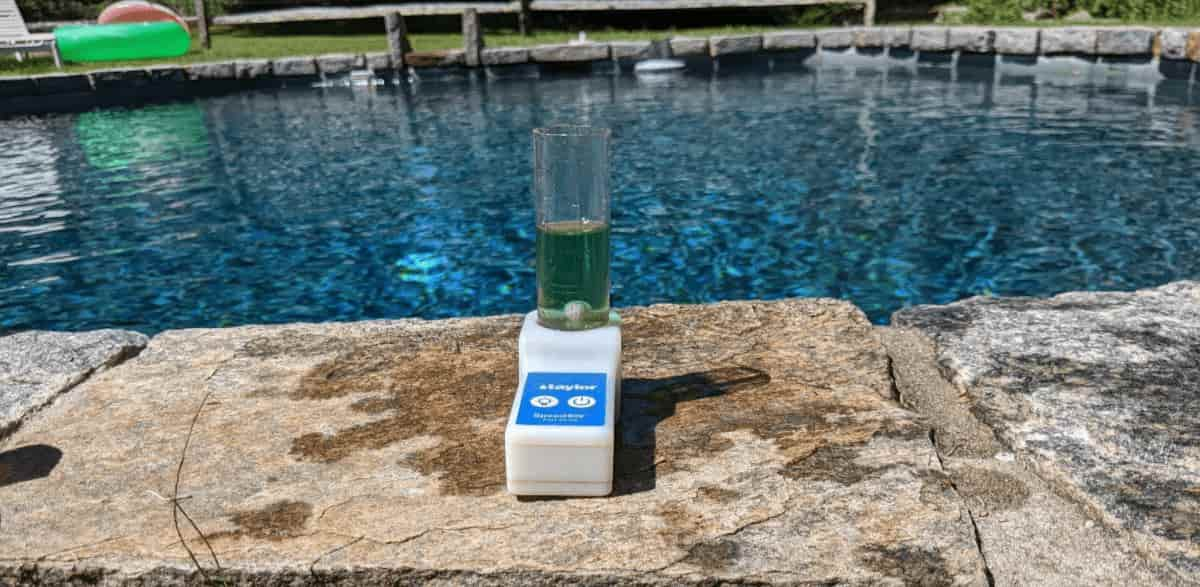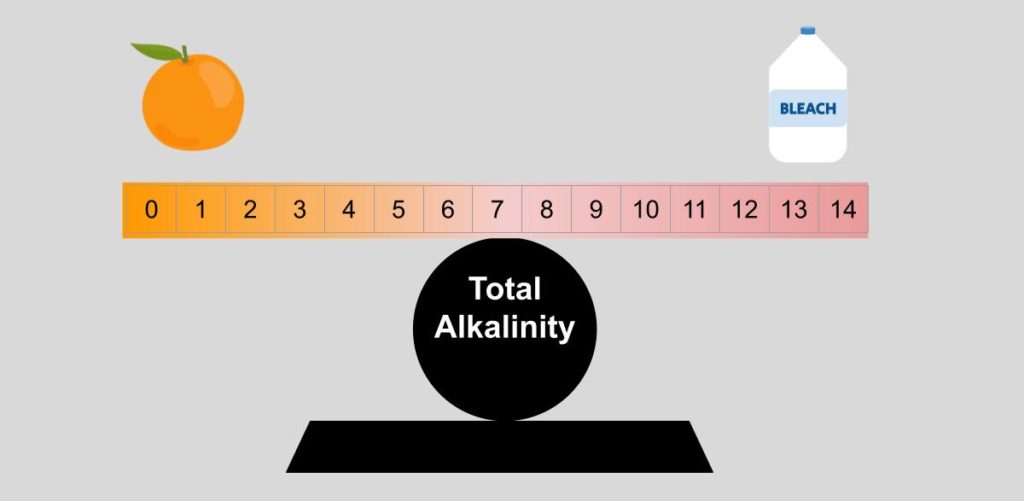Here’s How to Lower Total Alkalinity In Your Swimming Pool

Total alkalinity (TA) is a buffer that helps prevent pH from bouncing wildly in a pool. The relationship between alkalinity and pH is important in keeping your pool balanced.
In fact, you can’t lower total alkalinity without also lowering pH. The best way to lower alkalinity in your pool is to use muriatic acid.
Let Total Alkalinity Find Its Natural Balance with pH
Keep this tidbit in mind: alkalinity shouldn’t be lowered to reach any specific target. Yes, there is a recommended range, but alkalinity should find its balance with pH levels.
Total alkalinity is recommended to be between 50 and 90 ppm. If pH remains stable with a higher TA, that is OK! When pH is difficult to balance, that is when it’s time to lower alkalinity.

Any measurement lower than 50 ppm should be increased.
This might go against industry norms of acceptable alkalinity ranges. You may read to keep it higher, around 100 to 150 ppm.
The main reason for that high level is that most pool owners use trichlor pucks (tablets). Trichlor is highly acidic and will drive alkalinity—and pH, for that matter—down over time.
The higher TA levels are suggested to counteract that acid addition in the water.
Lowering Total Alkalinity
As mentioned above, use muriatic acid to lower alkalinity levels.
Klean Strip Green Muriatic Acid used to lower pH and TA in swimming pools.
You can also use sodium bisulfate, a dry acid that can be found in pool stores as pH Down or pH Reducer. However, it is typically more expensive and you shouldn’t use sodium bisulfate in plaster pools or in saltwater pools.
Remember that lowering total alkalinity will also lower pH, so there is a process to raising pH back up. Follow these steps until both are where you want them to be:
- Test the water to get current alkalinity readings. It is also a good idea to test the pH.
- Use our total alkalinity calculator to determine how much muriatic acid you need to reach your desired level.
- Add the recommended amount of muriatic acid to the pool. After about 30 minutes, test again.
- Raise pH by aeration (splashing, fountains, etc.). It’s a slow process, but it’s the best way to raise pH without raising alkalinity. You can also use borax, just keep in mind that it will still slightly raise TA, which we are trying to avoid!
There are a couple of items to keep in mind going through this process. If your alkalinity levels were super high, consider going through the steps a few times, adding muriatic acid in phases.
The last thing we want is pH falling too far that you need chemicals to raise it back quickly.
Testing will be your best friend throughout this whole process. If your kit comes with an acid demand test, that may be a bit more accurate in determining how much acid is needed.
What Happens When Total Alkalinity Gets Too High?
The most important effect of high alkalinity levels is making it more difficult to adjust pH.
It can also cause scaling, which can plug filters and pipes, and reduce water circulation. This can ultimately result in cloudy pool water. Not good!
Lower Alkalinity Only When Necessary
It’s good to reiterate: alkalinity should be lowered when it’s difficult to adjust pH. It’s OK to have a higher-than-recommended level if pH is stable. Personally, my alkalinity is around 90 – 100 at all times because that is how my pool likes it.
All pools have a personality. Once you know it, it’s easier to maintain!

